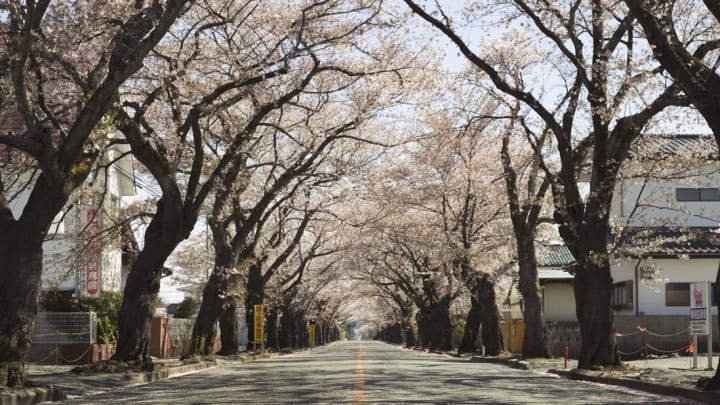In March 2011, an earthquake and subsequent tsunami led to the meltdown of a nuclear power plant near the Japanese city of Fukushima. The devastating incident received a level 7 on the International Nuclear and Radiological Event Scale (a score so high that it had only previously been given to one other event: The Chernobyl incident in 1986). An exclusion zone was drawn, forcing roughly 170,000 citizens to leave their homes and possessions behind. For years, the area sat trapped in time, with rotting food still sitting on restaurant tables.
Finally, in 2016 some select visitors were granted permits to visit restricted zones. One of those people was the dark tourism photographer Rebecca Bathory. Known for her book Soviet Ghosts, Bathory is again documenting uninhabited spaces that have fallen into decay. "The experience here was so much more emotional [than Soviet Ghosts]," she told Mental Floss in an email.

Coinciding with the cherry blossom season, Bathory attempted to capture the site of the horrible tragedy with a touch of optimism. "I wanted to capture how a moment of time, a moment from which hopefully these towns will continue to be cleaned up and rebuilt and one day residents will return to their homes and rebuild their towns, very much in the same way Hiroshima has become a thriving city again," she explains in her book.
Bathory spent five days exploring the area and capturing the unsettling landscape. Strangely, amongst all the decay, some buildings still had electricity; one bookstore even has a running computer.
"Even through disaster nature will replenish the land and those that died will be remembered and honoured," she writes. "It is particularly important for me to capture in photographs Fukushima as it currently exists, not only for historical records, but to inform people about this tragedy so it is remembered. As the memory fades and those terrible images of that day no longer flood the media, it can be so easy for us to forget."
You can check out all the pictures in Bathory's new book Fukushima: Return To, which comes out May 20.












